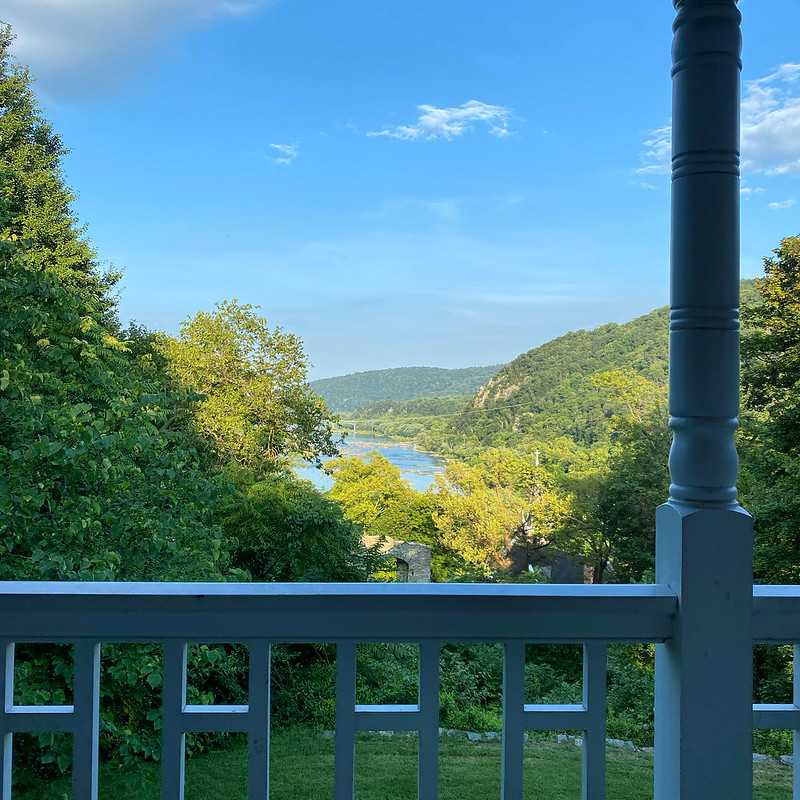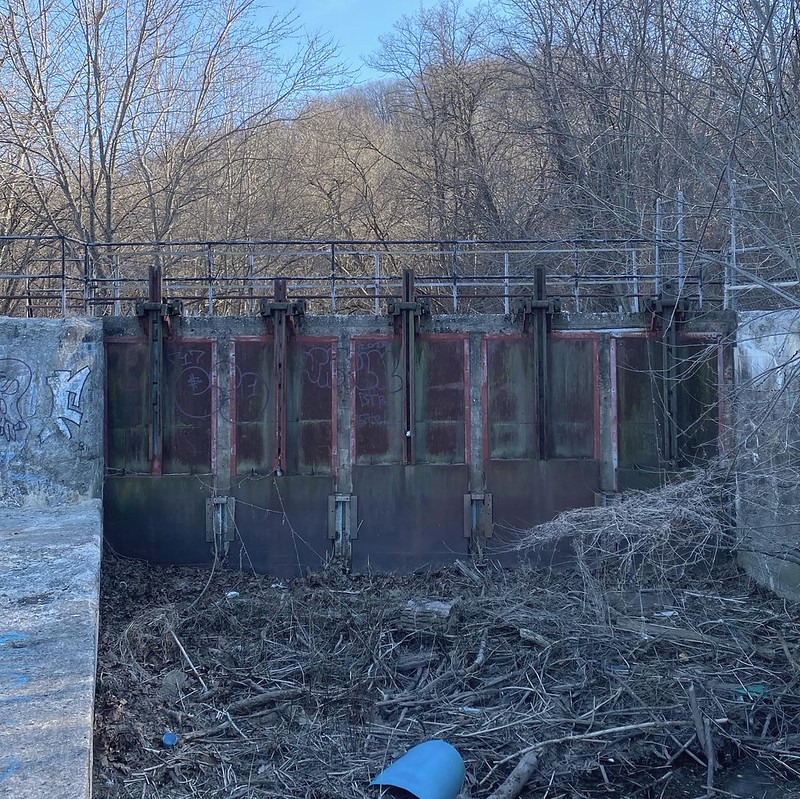 Two centuries on, James Rumsey still can't get credit for inventing the steamboat.
Check his Wikipedia entry:
Two centuries on, James Rumsey still can't get credit for inventing the steamboat.
Check his Wikipedia entry:
James Rumsey (1743–1792) was an American mechanical engineer chiefly known for exhibiting a boat propelled by machinery in 1787 on the Potomac River at Shepherdstown in present-day West Virginia before a crowd of local notables, including Horatio Gates. A pump driven by steam power ejected a stream of water from the stern of the boat and thereby propelled the boat forward.
This write up seems to go out of its way to NOT say that Rumsey invented the steamboat. Why, Rumsey's boat was propelled by a steam-driven pump. It deftly navigates around the 'historical fact' that Robert Fulton invented the steamboat, even though Rumsey's prototype worked fine a full two decades before Fulton's.
Nor is Rumsey listed anywhere in the Oxford University's widely-esteemed "Short History of Technology," though to be fair, the volume doesn't touch on steamboats at all, perhaps because they were quickly supplanted by steam trains. Trains unlike boats, could still operate through the winter, when the rivers and canals froze over.It's a weird little wrinkle in history. Perhaps it was just that Rumsey himself didn't live quite long enough to defend the title, "inventor of the steamboat." Especially since no one even knew what steamboats were then. Or perhaps more sinister forces were at work, a deliberate attempt to bury Rumsey's pioneering work under the sediment of history.
But why would anyone care? Technology innovation is rarely driven by a single person with a novel idea, but more often by a group of foward-thinkers all on the cusp of a new idea.
But the Rumsey story, as told by Millard K. Bushong, in his book "History of Jefferson County, West Virginia," is such an improbable yarn that you get wound into the sheer improbability of it all. It's a batshit crazy story featuring a boat that propelled itself by walking, walk-ons by George Washington AND Benjamin Franklin, cries of "Crazy Rumsey," debtors' prison, icy rivers, fakers galore, and the most untimely demise of Rumsey!
Read on!
![]()
by Millard K. Bushong
Southern Historical Press (1941)
![]()

A merchant in Berkeley Springs and resident of Sleepy Creek West Virginia, Rumsey was a man of many interests. One was how to move freight by water. Not yet built was the C&O Canal, which would run alongside the nearby Potomac River, but the river itself was seen as a possible conduit for moving goods along, not the least would be the great amounts of coal found in the area.
As it happened, the U.S. President at the time, George Washington, was passing through town, as part of a visit to the region. Somehow, Rumsey showed the President a model of a boat that, by mechanical means of some sort, would be able to propel itself upstream, with a load of freight. Washington immediately saw the great economic benefit of moving goods across the country by way of "inland navigation."
With Washington's goodwill, Rumsey petitioned the states of Virginia and Maryland for exclusive rights to construct and navigate boats in the state's waterways. About this time, Rumsey had gotten the idea to power the boat by way of a steam engine, and began work in 1785, with the help of his brother-in-law. It was slow moving though: Parts were obtained from Frederick and Baltimore. The winter had iced over the river, interrupting progress. The boilers, often leaky, frustrated Rumsey.
Nonetheless, a trial on the Potomac showed that a vessel could move against the mighty current of the Potomac River, even if the boiler was still quite leaky.
In parallel, Rumsey worked on his mechanical boat as well, which involved poles on each side of the craft to keep it moving along. In effect it was a boat that walked. In a letter to Washington, Rumsey admitted it was a failure. When loaded with a group of people and ballast, the floating mechanical beast could only move upstream about 200 yards, and was not steady. One pole would push off but then the other would slip.
So Rumsey concentrated his efforts on the steam-powered model through 1786 and into 1787. A new boiler was used, though, with this one, the heat from the steam melted the soft solder. Repairs were made though more time was subsequently lost as the drifting ice that winter "carried the boat away," resulting in considerable damage to the vessel.
Repairs were made and in September 1787, Rumsey was read for another trial. In this trial, the boat was loaded with two tons of cargo, and though it was able to move up the Potomac at two miles an hour, much steam escaped the boiler. Back to the drawing board.
My God, She Moves!
Rumsey spent a lot of effort making the boiler more efficient. The boiler would hold 20 pints of water, but would be designed such that it could do the work of a 500-gallon model. With this type, six bushels of coal could power a 12 hour run.
Finally, on December 3, 1787, after more than two years of work, Rumsey was finally able to demonstration his creation, which he did at Shepherdstown W.V. Bushong wrote:

On the appointed day a large crowd of townspeople and visitors gathered along the cliffs and shores of the Potomac River. Every class and color in the community was on hand. No doubt many came because of the curiosity, others to cheer the efforts of the persistent inventor, and still others to make sport of "Crazy Rumsey."
Several ladies were invited on board. The steamboat chugged up the river for about a half mile, then turned around and headed back to town, to the witness of the cheering audience. "My God, she moves!" someone proclaimed. Another referred to the craft as a "flying boat." Rumsey proceeded to go downstream for another two hours before turning around and heading home.
A second trail was conducted on December 11 that was -- despite some holes in the pipes cracked from freezing -- even more successful.The boat chugged upstream with three tons of cargo, at a handy clip of four miles an hour. To document his success, Rumsey secured from several witnesses oaths certified by Berkeley County judges.
The Rumseian Appreciation Society
With a successful demonstration in hand, Rumsey took his plans to Philadelphia to find investors. A group of interested backers formed a group, called the Rumseian Society, which was presided over by none other than Benjamin Franklin. They found much interest in Rumsey's diagrams and drafts describing his technology. The simple boiler design held much promise.
He then traveled London to find further investors. In London he met with the inventors and manufacturers of the steam engine, James Watts and Matthew Boulton. They wanted him to severe ties with the Rumseian Society but he felt loyalty to the Philly crew, who paid for his trip abroad. And thus the London business negotiations ended unsuccessfully.

While he built another prototype steamboat in London through most of 1792, in order to secure a British patent, he continued to seek investors. One agreed to fund the project but went bankrupt shortly thereafter. A second group of investors got into a disagreement over the British patent rights, and they demanded their money back, leaving to Rumsey to pay back the money he already spent, by borrowing from friends. He narrowly avoided going into debtor's prison, and had to work as a spell supervising the construction of a canal.
Rumsey finished the steamboat, but never got a chance to demonstrate it. In December of that year, he fell sick while giving a lecture, and never recovered. He was buried in the chuchyard of Saint Margaret's Westminster.
A few weeks later, his steamboat set off on a trial run, which proved successful, chugging away against the tide at 4 mph.
Even after death, further troubles bedeviled Rumsey's legacy. While in London, he met a young man, Robert Fulton, to talk about the purchase of a torpedo boat. Fulton would go to be recognized as the guy who did invent the steamboat, some 20 years later. To what extent Fulton had borrowed ideas from Rumsey is unknown.
Interestingly enough, if Fulton still gets historical competition for the title of 'steamboat inventor' it was not with Rumsey, but rather with another chap, Connecticut-native John Fitch.
In interviews, Fitch had stated he had started thinking about steam as a propulsion as early as 1785, yet that was two years after Rumsey started playing with the idea. When, in 1787, Rumsey circulated pamphlets describing his ideas of the steamboat, Fitch responded with his own literature, creating a sort of "war of pamphlets." The ideas Fitch presented were just vague descriptions, and were widely mistrusted. Fitch even visited Shepherdstown to glean some of Rumsey's ideas on jet propulsion, through the local townfolk grew suspicious of his questions and soon shooed him out of town.

It was not until 1790 that Fitch successfully demonstrated a working steamboat, though one that only achieved a speed of 6 mph -- in still water! A witness reported that engine for Fitch's boat was over 5 tons, taking up almost the entire craft.
In contrast, Rumsey's machinery, built a decade earlier, weighed in at a more economical 500 pounds. And unlike the rough hand-crafted steam system that Fulton threw together, Rumsey's was professionally engineered and assembled.
Today, Rumsey is rarely credited as the inventor of the steamboat, though his work is not entirely lost to history. He was a pioneer in boiler technology, known for the coil boiler and, most notably, the water-tube boiler, still widely used today in power station trubines. Also a prominent West Virginia technical college is named in his honor. So that's something.
Thanks to Michelle Gienow for all the inspo.